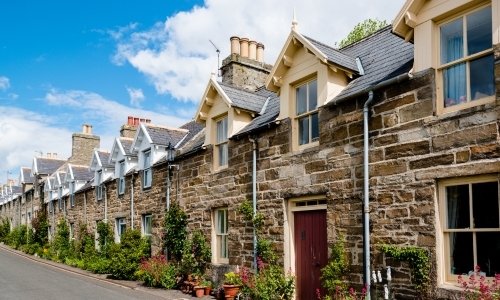
With the average number of days to sell at just 36* the Scottish property market outperformed the rest of the UK as last year drew to a close. As we step further into 2025, the Scottish property market is showing strong signs of growth, resilience, and opportunity. Despite global economic uncertainties and shifting property trends, Scotland's housing sector remains robust and poised for success. Both buyers and sellers are set to benefit from a dynamic market shaped by innovation, sustainability, and strategic investments.
A resilient market outlook
Scotland's property market has demonstrated resilience in recent years, overcoming challenges posed by economic fluctuations and global events. In 2025, experts predict continued stability and moderate price growth across key regions, driven by strong demand and limited housing supply.
Increased demand for sustainable homes
Sustainability continues to be a driving force in the property market. Buyers are increasingly prioritising energy-efficient homes, eco-friendly designs, and renewable energy systems. Developers and sellers who embrace these trends are expected to see increased interest and faster sales.
Investment hotspots on the rise
Cities such as Edinburgh, Glasgow, and Aberdeen remain popular investment destinations, but emerging areas like Dundee and Inverness are also attracting attention. Improved infrastructure, job opportunities, and lifestyle offerings are drawing both domestic and international investors to these regions.
The impact of government initiatives
Scottish government policies, including incentives for first-time buyers and investments in affordable housing, are set to play a key role in market success. Schemes designed to make homeownership more accessible will continue to stimulate demand.
Rural and suburban appeal grows
The pandemic-driven shift towards remote work has increased interest in rural and suburban properties. Scenic locations, larger homes, and improved digital connectivity are encouraging buyers to explore options beyond urban centres.
Technology transforming property transactions
Digital tools are streamlining the buying and selling process. From virtual property viewings to blockchain-based transactions, technology is making property deals faster, more transparent, and more secure.
Rental market remains strong
Scotland's rental market continues to thrive, driven by growing demand from young professionals, students, and temporary workers. Buy-to-let investors are seeing steady returns, particularly in major cities and university towns.
Opportunities for property developers
The ongoing demand for new homes presents significant opportunities for property developers. Strategic land acquisition and thoughtful urban planning will be key factors in meeting the needs of Scotland's growing population.
A balanced market for buyers and sellers
Experts predict a balanced market in 2025, with opportunities for both buyers seeking value and sellers aiming to maximise returns. While competition remains strong in high-demand areas, reasonable pricing strategies will help maintain market equilibrium.
Final thoughts
The Scottish property market is entering 2025 with optimism and momentum. With a focus on sustainability, technology, and strategic investment, the sector is well-positioned for success. Whether you're a buyer, seller or investor, Scotland offers a wealth of opportunities in the year ahead.
Looking to navigate Scotland's thriving property market? Contact us today for expert advice and guidance
